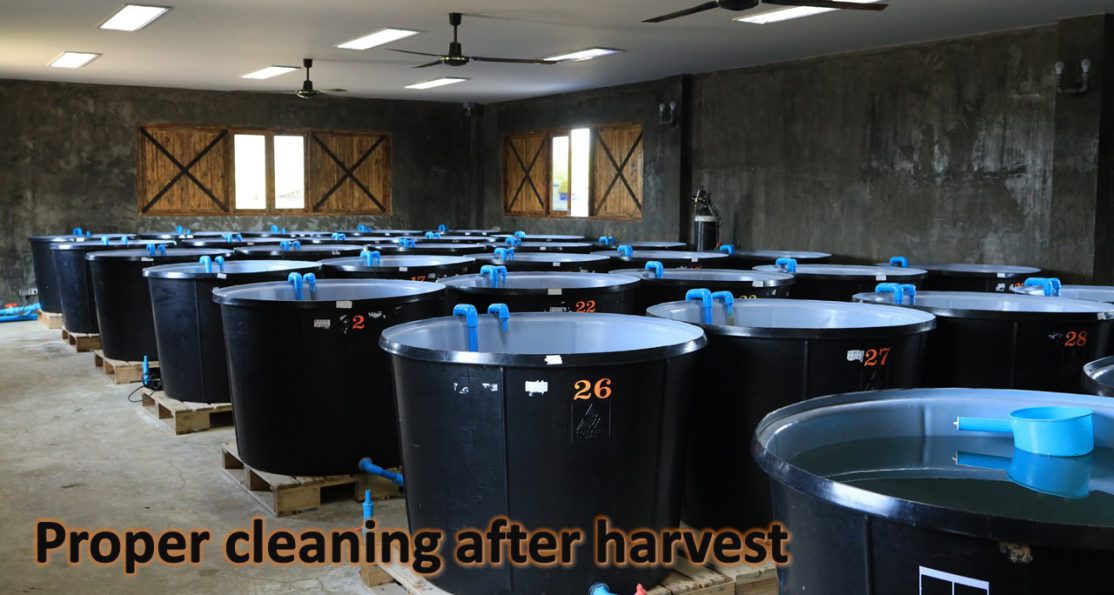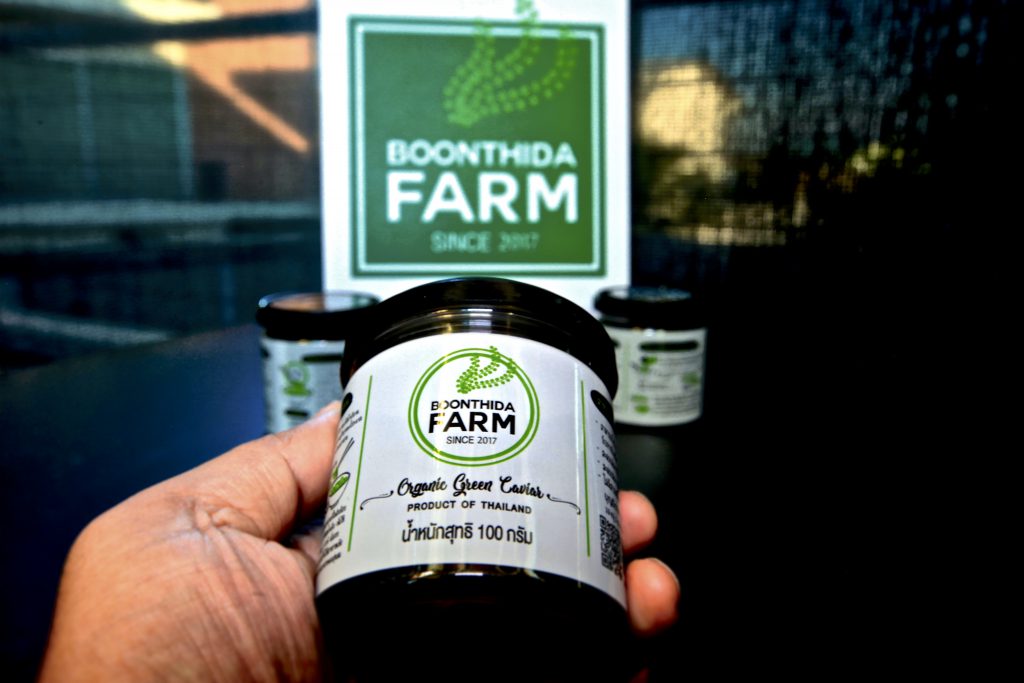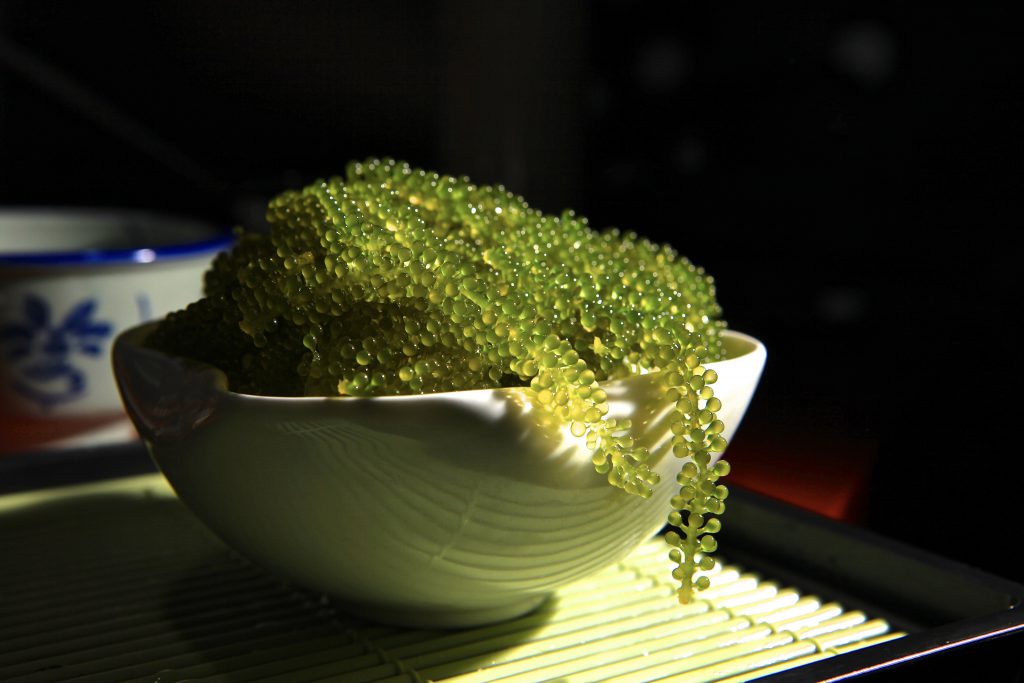About Green Caviar Seaweeds
Green Caviar (caulerpa lentillifera) is one of many species of green algae seaweeds that can be primarily found in hot, tropical countries. They can be found in the Philippines, Indonesia, Vietnam, Thailand, Southern China, and some parts of Japan. This type of seaweed has grown to become a popular food trend among consumers who wish to consume healthy food. Japan was the first country to begin studying green caviar seaweeds about forty years ago since 1980, by attempting to cultivate them in the open sea. That proved unsuccessful, and the project was moved to Okinawa, where they are now one of the island’s featured products. Okinawa green caviar seaweeds are said to be cultivated in concrete ponds. Mr. Mekaru, pioneer of the green caviar seaweeds, took over five years of trial and error to finally develop a successful method of cultivation in land. However, on his first day, despite trying to introduce green caviar seaweeds in local market all day, he only managed to sell one kilogram. He is currently the founder of a local fisherman’s cooperative, and continues to grow green caviar seaweeds to this day. His cooperative’s membership contains over eighty families and capable of supplying more than 200 kgs. of green caviar seaweeds per day.
Japanese workers have the same work ethics as most Asians – they work until death, because they do not wish to stay idle and become burdens on their families. They continue as productive members of society, generating income and finding new companions. At present, this cooperative produces at least 200 kilograms of quality green caviar daily. Japan has a population of around 147 million people. Naturally, 200 kilograms is not nearly enough to meet the consumers’ demand. Prices tend to be quite high, enough for even Okinawa locals to whine about. The going price is a minimum of 2,000 baht per kilogram, and Okinawa is almost 1,600 kilometers away from Tokyo, with sea and air being the only means of transport. Shipping costs are expensive, leaving the prices in Tokyo to skyrocket, becoming 5,000 baht per kilogram.
Seaweed is Japanese staple food. In Japan, parents often prepare lunch boxes with seaweed in them, and seaweed is a common ingredient as well. Japanese people are no stranger to using seaweed in cooking, and many people might think that they are the largest consumers of seaweed based on their population. On the contrary, South Korea is the largest consumer of seaweed, and the largest supplier is neither of the two countries, but rather China, which holds the longest coastline in that area. Shipping is easier to handle as well. In countries like the Philippines and Indonesia, where most of the landmass is comprised of small islands, shipping becomes an issue. However, the production standards in China are not as good as Japan’s.
In a study on life expectancy, Japanese people have a very high life expectancy, but Okinawan people have the highest life expectancy in the world. Scientists from different fields have attempted to study the reasons for this, especially how their lifestyle plays into their high lifespan. One of the most studied things is their diet, dubbed the ‘Okinawa Diet’, which has become a global food trend. Many American scientists have conducted serious research, and discovered that green caviar seaweeds are essential to human longevity. Seaweed contains important nutrients which cannot be found in crops grown on land, and even Europe has begun to incorporate seaweed into their food repertoire, as well as conducting further research into potential medical applications of seaweed.
In Thailand, green caviar seaweeds have only begun to be researched for commercial use in the past ten years. The Department of Fisheries began by using green caviar seaweeds to alleviate problems with shrimp ponds (click here for further information), before cultivating them for continuous commercial production. Seaweed has historically not been a staple food in Thai cuisine, all the way from before the Ayutthaya period to the present. The general populace lacks of proper understanding of seaweed, which has caused many merchants to attempt to capitalise on this market. When seaweed was no longer profitable, they were ready to abandon it all together. Understanding seaweed is important, which is why it is one of our goals to provide information on seaweed and green caviar seaweeds to government officials, students or teachers, and general consumers who can help spread information on why green caviar seaweeds are important and beneficial, as well as the importance of their origins.
Why is the origin of Green Caviar Seaweeds so important ?
When we talk about the importance of origin in respect to green caviar seaweeds, we have to look at two main points : When the Department of Fisheries conducted research on using green caviar seaweeds to reduce pollution in shrimp ponds, those ponds did not have any standard filtration systems which allowed waste to be disposed of properly, damaging the coral reefs and local marine ecosystem. Green caviar seaweeds improved the profits of shrimp farming, because they produce clean water – when the polluted water from shrimp ponds were poured into green caviar seaweeds ponds, the water became clean and could be instantly filtered back into the shrimp pond with no lingering damage to the green caviar seaweeds, which grew normally.
Green caviar seaweeds require nutrients during growth. Some farms use chemicals such as urea fertilizer or manure to treat their products, and it becomes difficult to avoid any lingering chemicals in the finished product. Consumers become unaware of any chemicals used, and receive more drawbacks than benefits.
Boonthida Farm’s philosophy is not to produce green caviar seaweeds that profits at the consumers’ expense, and we stand firm on this ideology. We are approved by the Department of Fisheries as a ‘Fully Organic Farm’, and we strive to produce healthy green caviar seaweeds rather than profits. (Read further).
Why choose our Preserved Green Caviar Seaweeds ?

1. Eliminates the issue of storage, as they can be stored for at least 12 months.
2. They are high quality, going through meticulous quality checks from the FDA.
3. Can be shipped to customers wherever domestically or internationally.
4. Fills restaurants’ needs by being able to provide green caviar seaweed throughout the year.
5. Undergoes appropriate cleaning processes that ensures a clean product.
6. Quality packaging, with bottles that do not leak or easy to break.
7. Is available year-round, and can be purchased off season.
8. “ZERO Waste”, what’s left in the bottle can be contained and put back in a fridge and can be consumed in later date.
9. The bottled Green Caviar Seaweeds can be stored in any condition environments even in the Freezer, it won’t have an effect of the product in any way.
10. Naturally, Green Caviar has the special character where it releases water out especially when being transported from one point to another. With this Bottled Green Caviar Seaweed this is no longer the issue.
Benefits of Green Caviar Seaweeds
1.A great source of vitamins A and C
2. High iodine content, helps protect against thyroid issues.
3.High magnesium content, which helps reduce blood pressure.
4.High fiber with low calories.
5.Contains substantial amount of antioxidants.
6.Nourishes the brain and hair.
7.Protects the moisture in skin cells.
8.Filled with vitamins B, C, E, and K.
9.Magnesium helps the muscles and nervous system to work at full potential.
10.Low fat gives you minimal energy but high nutrition.

-Quality green caviar seaweeds should have received separation.
-Before separation, the green caviar seaweeds should be rested for at least 12 hours to restore its integrity before separation.
-After separation, they must be cleaned through the skimming process, and allowed to rest for another 72 hours in sea water.
-This process takes around four days: 12 hours rest, 12-18 hours skimming, and a minimum 48 -hour resting period for nourishment after potential separation damage. (read further)




